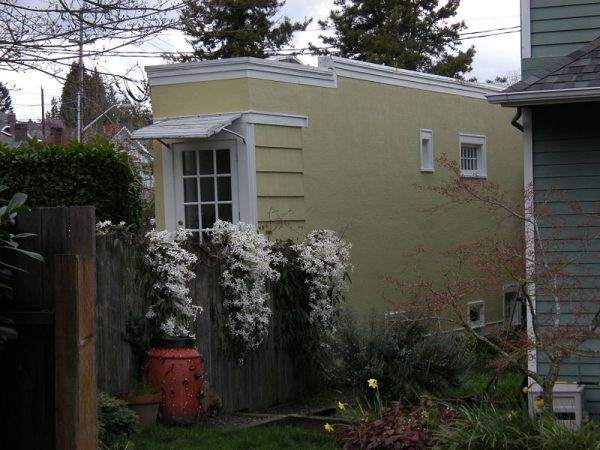
The origins of many property regulations come about because someone pushed the limits of common sense long ago. And we still see examples of someone flouting those regulations because the resulting buildings were grandfathered in, or may even be the cause of a certain regulation. We've read tales of spite houses, but there are more of these than you might know, as Mental Floss' latest collection shows. The grander a spite construction, the more likely it is to have survived, and the stories behind them can be fascinating. Mess with someone's property, and feel their wrath. A typical spite building is one built on a piece of land thought too small, due to government seizure of part of a plot or by a seemingly unfair inheritance. Or, in the case of the Montlake House, shown above, a divorce settlement.
Whatever the origins of the wedge-shaped Montlake House in Seattle, Washington, built in 1925, spite is baked into its blueprint. According to one story, a woman walked away from a nasty divorce with an awkwardly-laid-out piece of land. Instead of leaving it empty like her ex-husband must have hoped for, she built a pie-slice-shaped home that fit perfectly onto the property. Another legend says that the structure went up when someone down the road offered to buy the land for an insultingly low amount. The owner got their revenge by erecting the odd building to block their neighbor's view. Today, the spite house—which is 15 feet wide on one end and 55 inches at the other, just wide enough for a door—is a treasured Seattle landmark. In 2018, it hit the market for $600,000. —M.D.
But it's not just houses. Or even hotels or castles, although those are included. There have been entire manufacturing companies founded out of spite, some that are now household names. There's also a sad tale that may be the origin of the phrase "cut off your nose to spite your face" in this mega-list at Mental Floss.
(Image credit: Joe Mabel)





